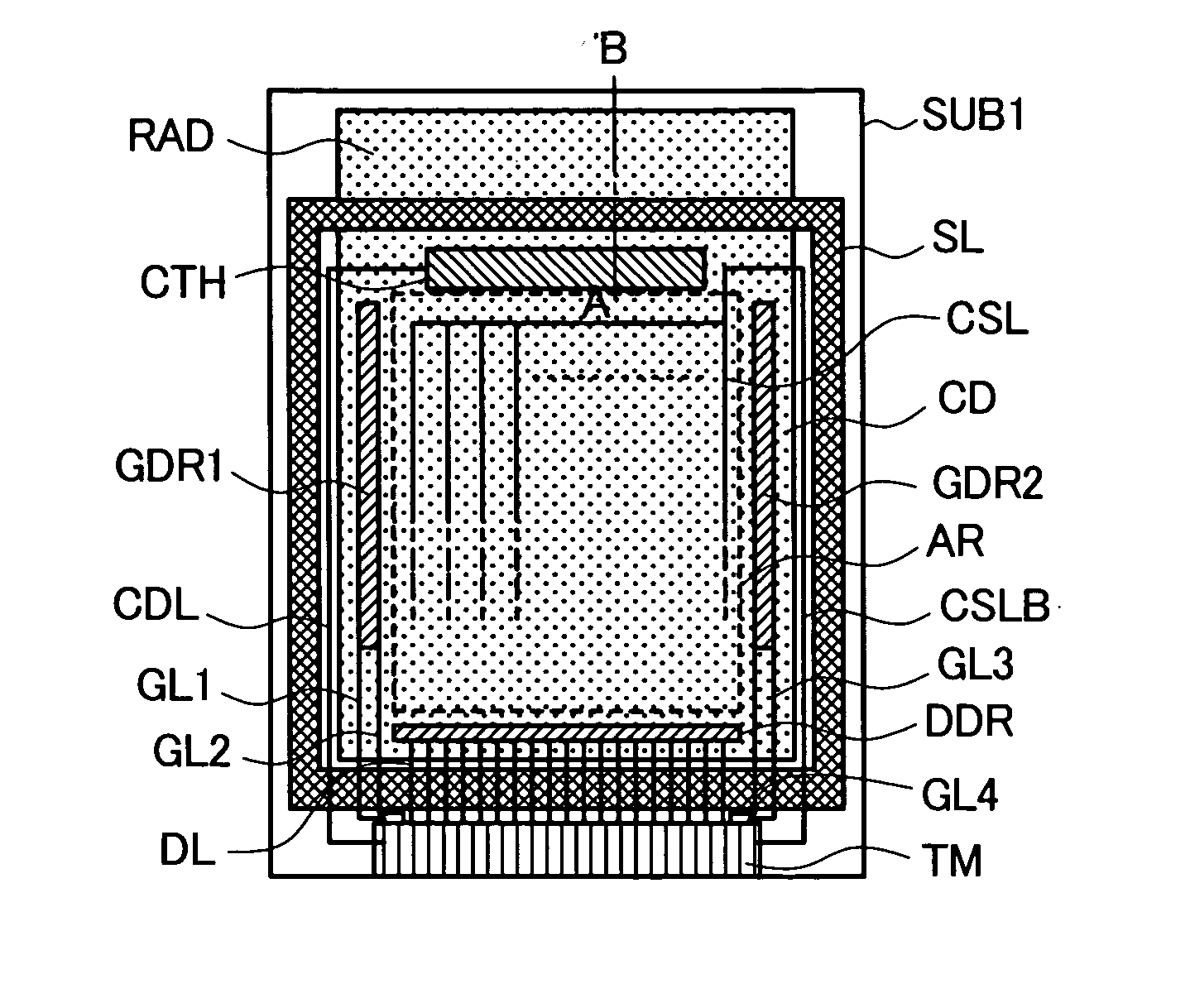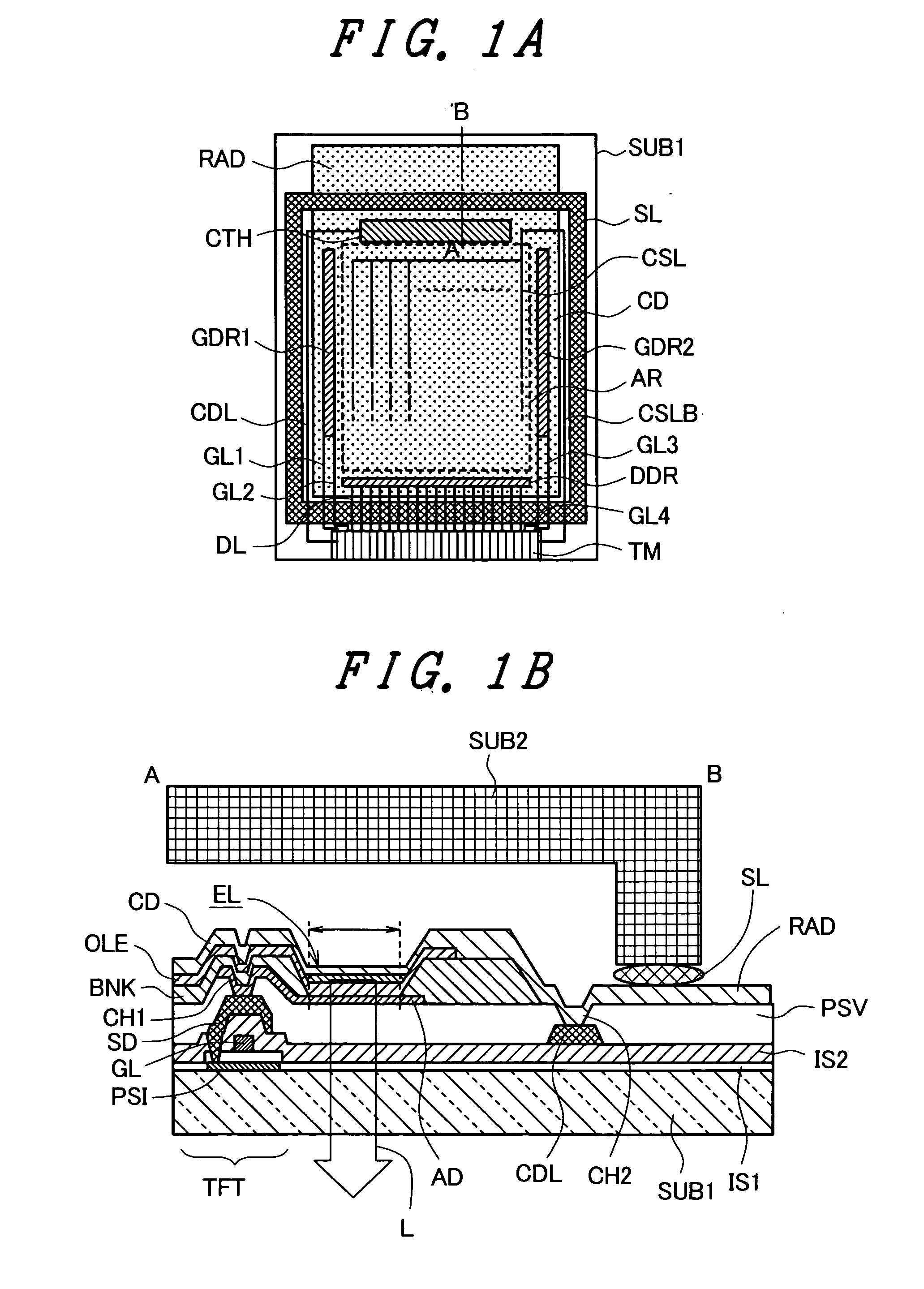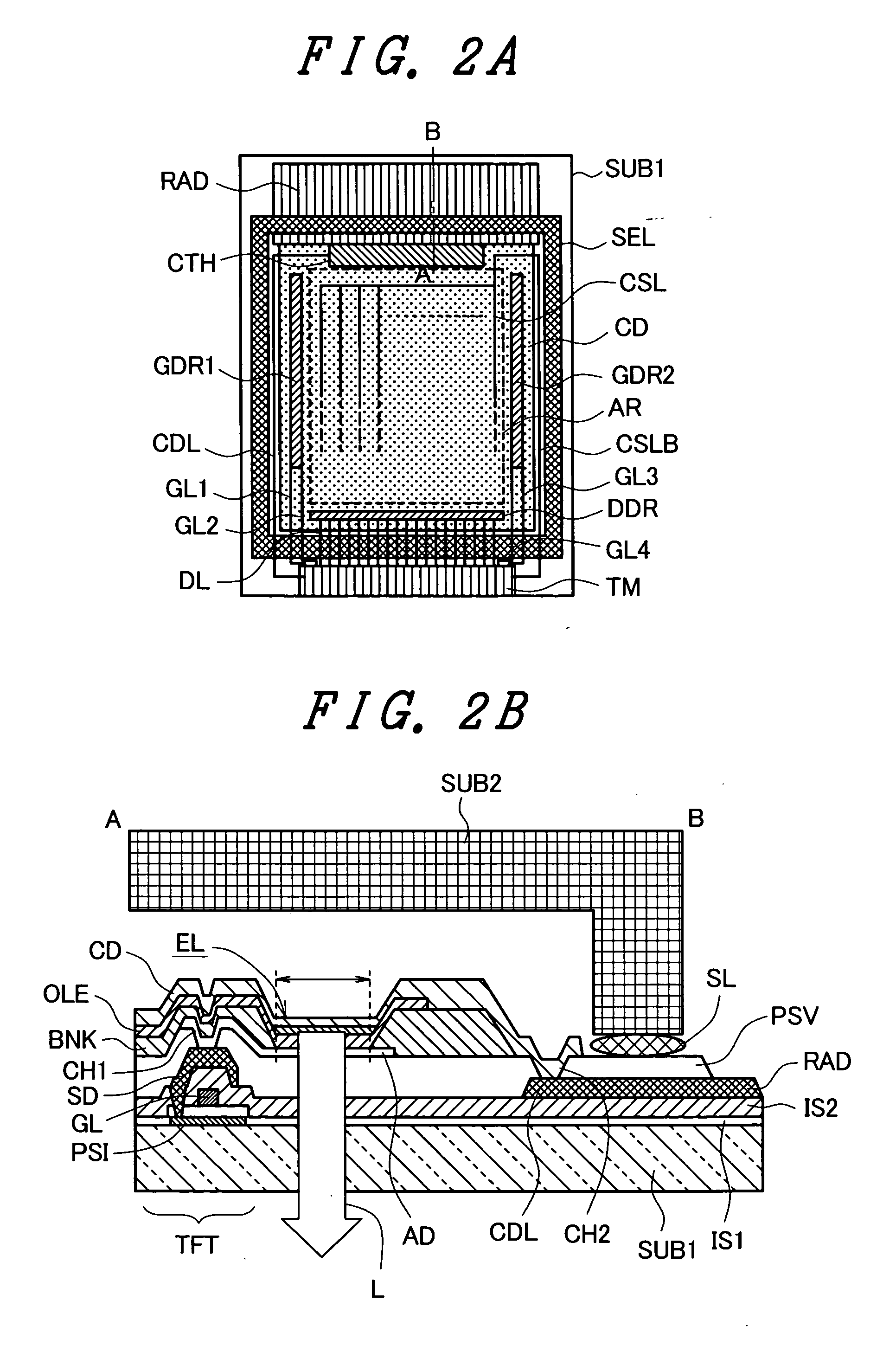Organic light emitting display
a light-emitting display and organic technology, applied in the direction of thermoelectric device junction materials, electrical devices, semiconductor devices, etc., can solve the problems of shortening the life of the display, unable to achieve sufficient heat radiation, and large heat conduction distance between the radiation section and so as to achieve the promotion of thermal diffusion from the radiation section, shorten the heat conduction distance between the organic light-emitting elements and the radiation section, and increase the heat radiation efficiency
- Summary
- Abstract
- Description
- Claims
- Application Information
AI Technical Summary
Benefits of technology
Problems solved by technology
Method used
Image
Examples
first embodiment
[0040]FIGS. 1A and 1B schematically illustrate a structure of an active-matrix-type organic light emitting display in a first embodiment according to the invention. FIG. 1A is a plan view showing an entire structure of a main part. FIG. 1B is an enlarged cross-sectional view showing a pixel and its vicinity taken along a line A-B in FIG. 1A. Reference numerals similar to those in FIGS. 5A and 5B are given to similar parts and components, and explanation of those is not repeated herein.
[0041] The organic light emitting display shown in FIGS. 1A and 1B includes a number of the organic light emitting elements EL extending throughout the surface of a display area AR. The end of the cathode CD as a second electrode, which is formed by aluminum material or metal material including aluminum, for example, and constitutes the organic light emitting elements EL, reaches outside the encapsulated area defined by the seal member SL at the end of the main substrate SUB1. This end forms a radiati...
second embodiment
[0044]FIGS. 2A and 2B schematically illustrate a structure of an active-matrix-type organic light emitting display in a second embodiment according to the invention. FIG. 2A is a plan view showing an entire structure of a main part. FIG. 2B is an enlarged cross-sectional view showing a pixel and its vicinity taken along a line A-B in FIG. 2A. Reference numerals similar to those in FIGS. 5A and 5B are given to similar parts and components, and explanation of those is not repeated herein.
[0045] In the organic light emitting display shown in FIGS. 2A and 2B, apart of the cathode line CDL which is formed by aluminum material and disposed between the intermediate insulating layer IS2 of the main substrate SUB1 and the passivation layer PSV extends to the outside of the encapsulated area of the main substrate SUB1 on the intermediate insulating layer IS2. This part corresponds to the radiation section RAD formed integrally with the cathode line CDL. The radiation section RAD is made of t...
third embodiment
[0049]FIG. 3 schematically illustrates a structure of an active-matrix-type organic light emitting display in a third embodiment according to the invention. FIG. 3 is an enlarged cross-sectional view showing a pixel and its vicinity of a main part of the organic light emitting display. Reference numerals similar to those in FIGS. 2A and 2B are given to similar parts and components, and explanation of those is not repeated herein. The organic light emitting display shown in FIG. 3 has a thermal conductor HC covering the area from the surface of the radiation section RAD which is extended out of the encapsulated area of the main substrate SUB1 to the outer surface of the encapsulation glass substrate SUB2.
[0050] The thermal conductor HC is preferably a metal layer such as aluminum layer, copper layer, magnesium layer, and alloys of these materials. These metal layers can be formed by deposition, sputtering, CVD or other methods. Appropriate materials other than the metal layers invol...
PUM
 Login to View More
Login to View More Abstract
Description
Claims
Application Information
 Login to View More
Login to View More - R&D
- Intellectual Property
- Life Sciences
- Materials
- Tech Scout
- Unparalleled Data Quality
- Higher Quality Content
- 60% Fewer Hallucinations
Browse by: Latest US Patents, China's latest patents, Technical Efficacy Thesaurus, Application Domain, Technology Topic, Popular Technical Reports.
© 2025 PatSnap. All rights reserved.Legal|Privacy policy|Modern Slavery Act Transparency Statement|Sitemap|About US| Contact US: help@patsnap.com



